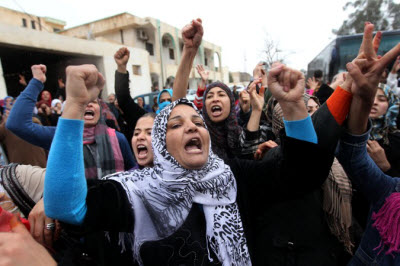Women have always been effective leaders in the field of education and cultural activities for ever. They have proved their might in the field of producing academic, fictional, non-fictional and cultural activities. Although not much literature is available on the achievements of women in these fields, there are some positive endeavourers being made to acknowledge the importance of women in current developments. Their contribution to the literature, as writers, is obvious though. Women have been involved in creative writing from very old time in fact. They have been contributed to the journals, newspapers, and magazines of repute. The difference is that they used to publish their works hid under the garb of male names. History has it that Egyptian women used to write in men journals in the 1880s, and by 1890 there were many young women from Arabian middle class who were publishing their own journals and news papers. They mainly hailed from Egypt, Lebanon and Syria. The first journal was published in 1892 by Hind Nawfal. It was in 1914, when another popular magazine ‘Fatat Lubnan’, which translates as ‘girl of Lebanan’ was launched by Salima Abu Rashid. This was an attempt to boost morale of Arabian young women and was appreciated very much for the purpose.
Salima was committed to promote womanhood, and oppose corruption and defy oppression during the period. Another crusader in the list is Ajamy who initiated an attempt to literate Arabian women in the form of a Women’s Literacy Club in the same year, i.e. 1914. Julia Dimashqiya also joined the rally in 1921 by launching an exclusive women magazine in the name of al-Mar’a al-Jadida which means New Women. The magazine was first started in Beirut, and was solely devoted to urge the Arabian women to come ahead and take part in the social development for their own betterment. Another magazine namely Al-Fajr was launched in the same year by another women activist Najla Abu al-Lam’. Najla focused her efforts to bring new research works and studies in the knowledge of Arabian women and encourage them to make action. Al-Fajr means ‘Dawn’ which this magazine was meant to bring. Nur al-Fayha, which means Light of Damascus, was launched by Nazik Abid with the purpose to highlight the discrimination as a root cause of national problems in the region. The motto was to promote equality and encourage the women. There were more and many similar developmental moves initiated by the women in Arab society and which played an important role in bringing the morale of the women up.
Recently there have been launched some websites, akin to electronic versions of yesterday’s magazines, which are taking the same crusade ahead with more interactive manner. These websites are sharing the information about global position of the women and providing Arab women a platform to represent themselves globally through online media. These websites are offering free memberships to the women and offering them a way to share their views with the world. These websites too are encouraging women to know their rights and get them.
